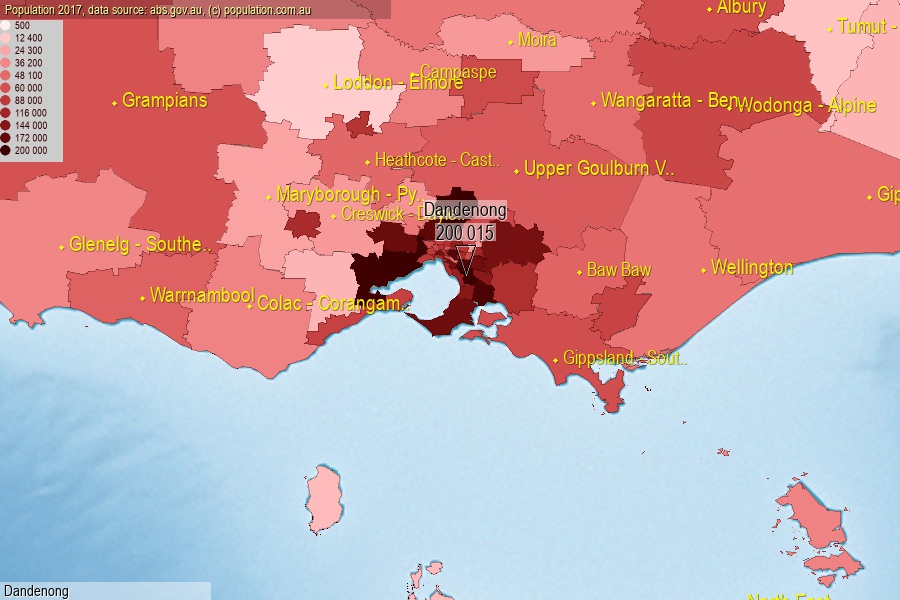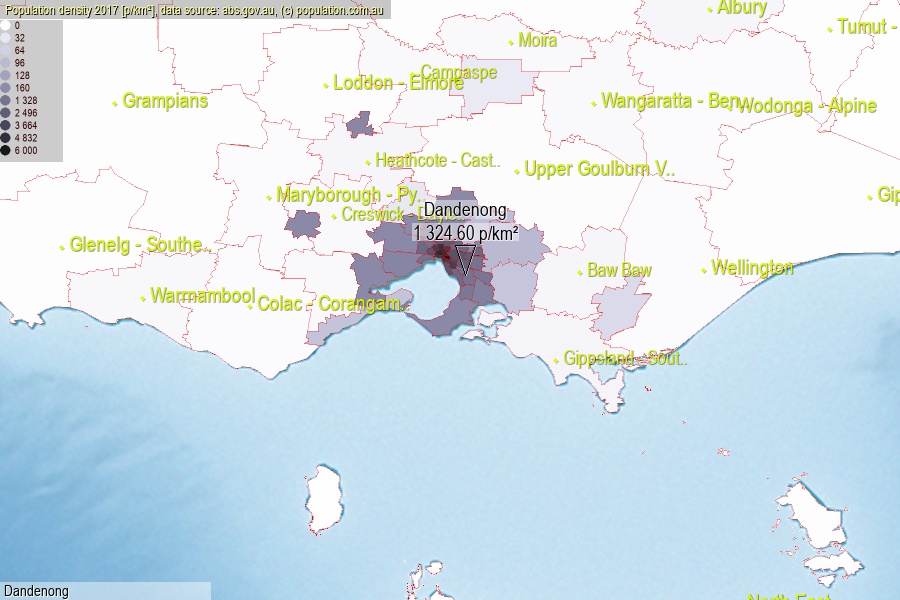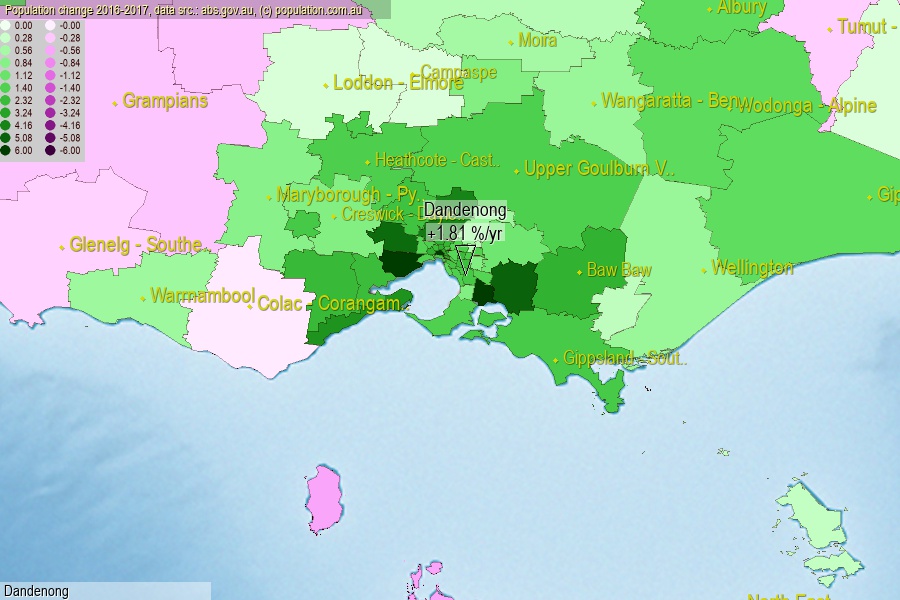 population.com.au
population.com.auLast official estimated population of Dandenong (as Statistical Area Level 3) was 200 015 people (on 2017-06-30)[2]. This was 0.81% of total Australian population and 3.111% of VIC population. Area of Dandenong is 151.00 km², in this year population density was 1 324.60 p/km² . If population growth rate would be same as in period 2016-2017 (+1.81%/yr), Dandenong population in 2025 would be 230 947. [0]



Click to enlarge. Dandenong is located in the center of the images.
Population [people], population density [p./km²] and population change [%/year] [2]
View borders » (new window) [4]
[1991-1992] +0.01 %/Y
[1992-1993] -0.63 %/Y
[1993-1994] -0.65 %/Y
[1994-1995] -0.32 %/Y
[1995-1996] +0.11 %/Y
[1996-1997] -0.35 %/Y
[1997-1998] -0.80 %/Y
[1998-1999] -0.73 %/Y
[1999-2000] -0.58 %/Y
[2000-2001] -0.47 %/Y
[2001-2002] -0.45 %/Y
[2002-2003] -0.33 %/Y
[2003-2004] +0.08 %/Y
[2004-2005] +0.41 %/Y
[2005-2006] +1.23 %/Y
[2006-2007] +1.74 %/Y
[2007-2008] +2.06 %/Y
[2008-2009] +1.96 %/Y
[2009-2010] +0.99 %/Y
[2010-2011] +1.21 %/Y
[2011-2012] +1.87 %/Y
[2012-2013] +2.04 %/Y
[2013-2014] +2.08 %/Y
[2014-2015] +2.17 %/Y
[2015-2016] +2.27 %/Y
[2016-2017] +1.81 %/Y
[0] Calculated with linear interpolation from officially estimated population
[1] Read more about SA3 and Australian Statistical Geography Standard (ASGS) on abs.gov.au
[2] Population data from Australian Bureau of Statistics (Population and density: 2017; change: 2016-2017)
[3] Digital Boundaries: Australian Statistical Geography Standard (ASGS) 2016.
[4] Border coordinates are simplifyed using Ramer-Douglas-Peucker algorithm.